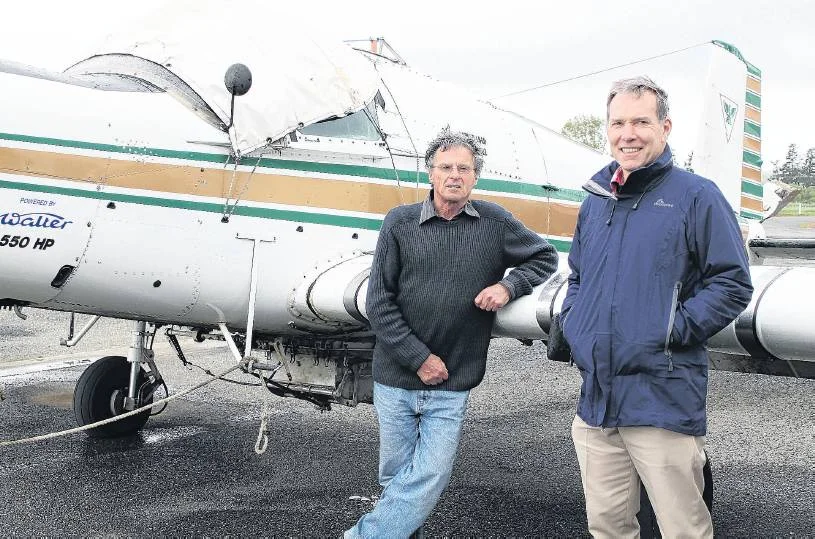Flight Testing in Gore
Flight Structures Design Delegate and Senior Engineer Murray McGregor was invited to be involved with the Transport Accident Commission investigation into the Fox Glacier accident. Below is the article from the Gore Ensign on Wednesday November 5th.
Flight Structures Design Delegate and Senior Engineer Murray McGregor was invited to be involved with the Transport Accident Commission investigation into the Fox Glacier accident. Below is the article from the Gore Ensign on Wednesday November 5th.
Phoenix Aviation at Charlton is the base for a partial review of evidence relating to the 2010 crash of a Walter Fletcher aeroplane at Fox Glacier. MARGARET PHILLIPS reports.
Phoenix Aviation, at Charlton airport, is being used by the Transport Accident Investigation Commission to carry out a partial review of evidence that led to its findings regarding the 2010 crash of a Walter Fletcher aeroplane at the Fox Glacier aerodrome.
On September 4, 2010, the pilot of the plane, with eight parachutists on board, lost control during take›off from Fox Glacier aerodrome. The aeroplane crashed in a paddock adjacent to the runway, killing all nine occupants.
Commission deputy chief investigator Peter Williams, of Wellington, said the partial review of evidence was carried out at Phoenix Aviation earlier this week as the southern venue was the most suitable. Phoenix Aviation had a Walter Fletcher aircraft. The review was prompted by questions raised at the inquest, Mr Williams said. ‘‘It’s part of a number of aspects of inquiry that we’re reviewing,’’ he said. The review had been carried out this year.
‘‘There’s a lot of things to be looked at.’’
Flight Structures consultant Murray McGregor, of Hamilton, also travelled to Gore to help with the review. Mr McGregor said the object of the visit to Phoenix Aviation was to generate basic data on the flight characteristics of the Walter Fletcher. The Walter Fletcher was predominantly used as a topdressing plane, he said. The Transport Accident Investigation Commission’s findings on the accident said there were no technical defects identified that might have contributed to the accident and the aeroplane was considered controllable during the take-off roll, with the engine able to deliver power during the short flight. ‘‘The aeroplane’s centre of gravity was at least 0.122m rear of the maximum permissible limit, which created a tendency for the nose to pitch up,’’ the findings stated.
‘‘The most likely reason for the crash was the aeroplane being excessively out of balance. In addition, the aeroplane probably became airborne early and at too low an airspeed to prevent uncontrollable nose›up pitch.’’ The aeroplane reached a pitch angle that would have made it highly improbable for the unrestrained parachutists to prevent themselves sliding back towards the tail, and any shift in weight rearward would have made the aeroplane more unstable.
Photograph : Flight Structures consultant Murray McGregor (left), of Hamilton, and Transport Accident Investigation Commission deputy chief investigator Peter Williams, of Wellington, wait for a break in the weather at Charlton airport during their review of evidence relating to the 2010 crash of a Walter Fletcher aeroplane at Fox Glacier. PHOTO: MARGARET PHILLIPS
STC GAINED FOR MODIFICATION OF 750XL FLAP SYSTEM.
Farmers Air, one of New Zealand’s leading agricultural aircraft operators, came to Flight Structures to design a new flap system for their PAL 750XL aircraft.
Farmers Air, one of New Zealand’s leading agricultural aircraft operators, came to Flight Structures to design a new flap system for their PAL 750XL aircraft. The standard flap actuation system is electrically actuated contained under the cabin floor, which is practical for utility aircraft. However this was proving to be mechanically unreliable due to the high cycle nature of agricultural operations and maintenance intensive.
Flight Structures redesigned the flap system to be located above the cabin floor and hydraulically actuated. The flap system and hydraulic components were sourced locally in Hamilton.
Flight Structures was responsible for the design and certification of the hydraulic flap system. We worked closely with Farmers Air Personnel for design advice and Aeromotive who were responsible for embodiment.
The result of this project has been a significant improvement in aircraft reliability and reduced maintenance costs.


